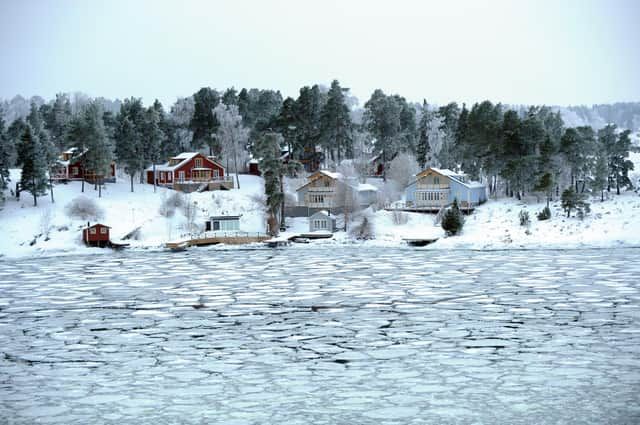Energy price crisis: As winter chill bites, UK may envy Finland's heat pump revolution – Laura Waddell


Yes, I know, it’s still September. Even the crispest autumn evenings are yet to come. But with heating at a premium and a chill creeping in uninvited with the spiders, I’ve found myself reaching for the same thermal leggings and long-sleeved tops I bought back in January to survive a month in rural Finland.
It was there, deep into the minus centigrades with heaped-up snow, I learned the human body takes two or three weeks to adjust to drops in temperature, and to stop shivering quite so much.
Advertisement
Hide AdAdvertisement
Hide AdInterestingly, Finland, forced by oil crises during the 1970s to reckon with the sustainability of an especially high domestic demand for energy, has embraced heat pumps, a low-carbon alternative to the gas boiler, on a much bigger scale than the UK has.
A blog from the University of Sussex Energy Group claims that “in the UK, heat pumps are used in barely one per cent of households, meaning the technology has been stuck in the start-up phase since the 1970s”.
For here and now, if I am to avoid switching on the heating until I can’t stand not to – something many of us will be doing out of necessity this winter, the dread of horror-show bills looming – I endeavour to prepare myself to withstand the encroaching cold.
As I browse vitamin D tablets and check out thick socks, I wonder how online retail monsters mark the seasons: the consumer calendar hastened by how quickly things wear out, and the faster we must replace fast fashion.
The algorithm, creepily, seems to anticipate my thoughts as ads appear for cold weather comforts; goods I’ve bought before at similar times of the year that may or may not have lasted until the next winter.
The weary cycle of product failure and inevitable replacement, and on to the next dopamine hit of buying new stuff, another parcel hitting the mat. The older I get, the more I appreciate a product built to last.
Rooting out cold weather clothes, I’m grateful for the times I plumped for – or was in a position to afford – garments that last longer than one spin through the months.
I unearth the coffee frother I bought during lockdown, brush the dust off its lid, and concoct a homemade matcha latte by adding a glug of green tea syrup and a pinprick of vanilla essence to hot, foamy milk. I add wrist warmers to the layers I’m wearing. Autumn is a time for unashamedly leaning all the way into the bit. Some of the best clichés are seasonal; there’s nothing like a cool drink on a hot day except the hug of wool and warming drinks on an icy one.
Advertisement
Hide AdAdvertisement
Hide AdI have been here before: lit a crackling candle, looked for turning leaves, tried to stave off the dark with sticking plaster consumption. But the public mood, this year, is growing frustrated at the cycle of buy-and-break, of inefficiency and unsustainability.
Many are looking not just for the annual appearance of the pumpkin spiced latte, but for their nearest energy protest.
Comments
Want to join the conversation? Please or to comment on this article.

